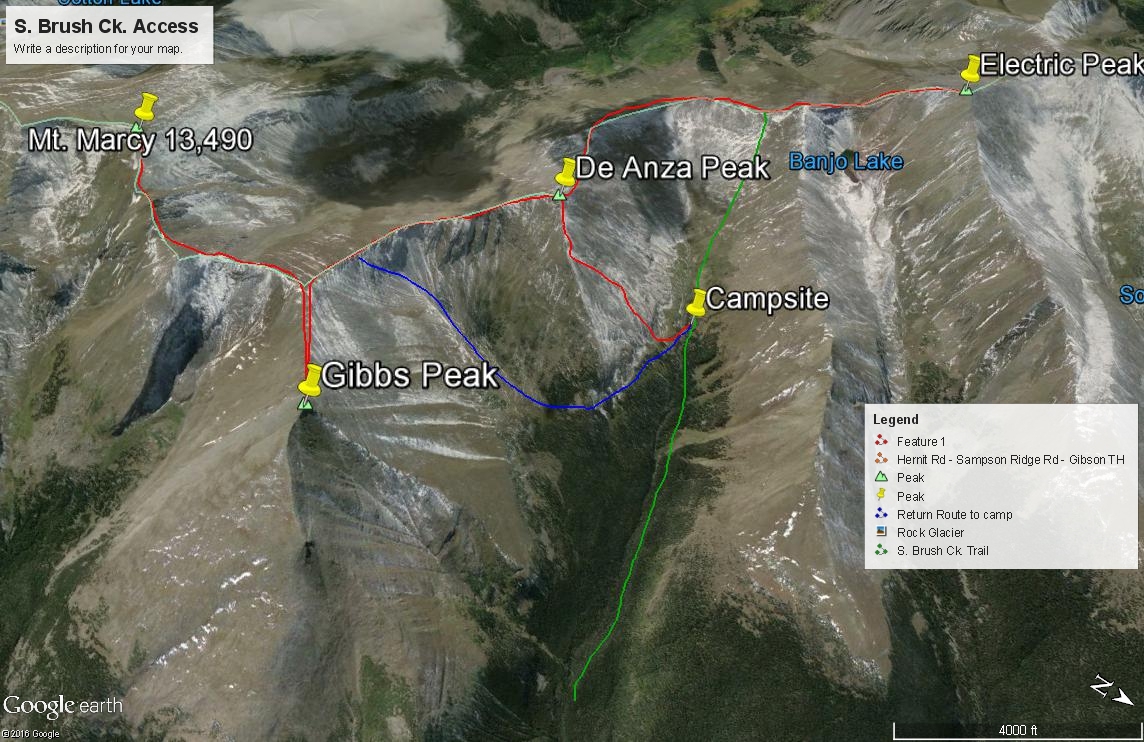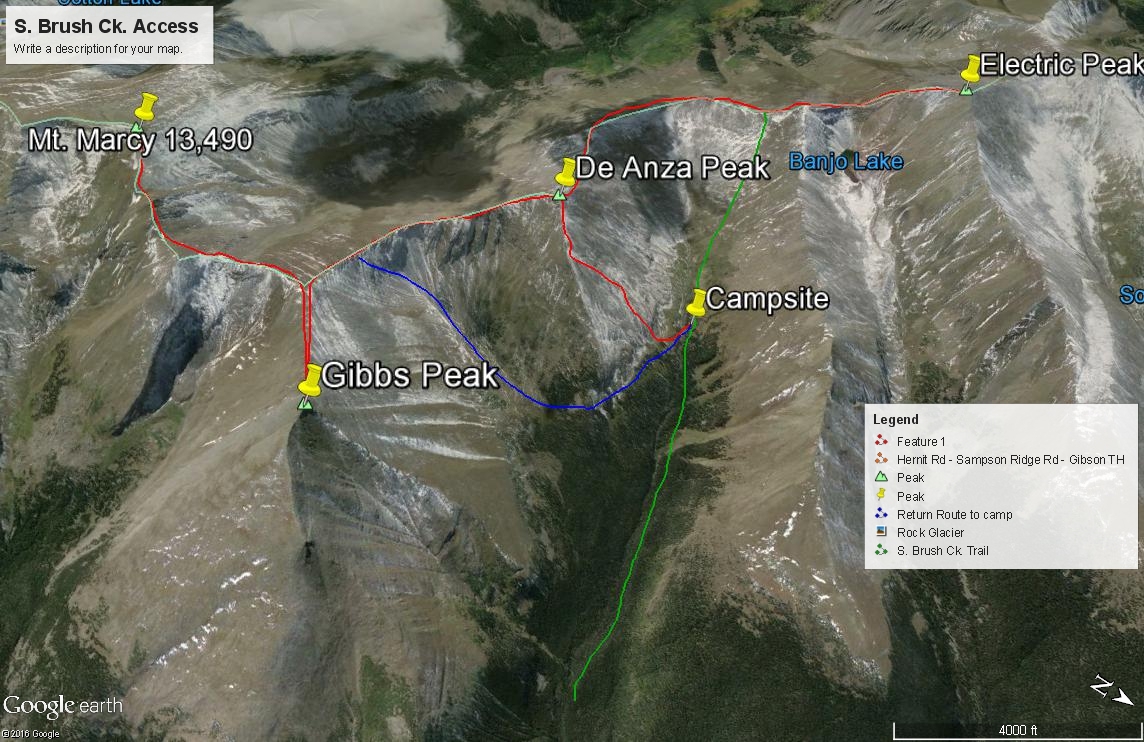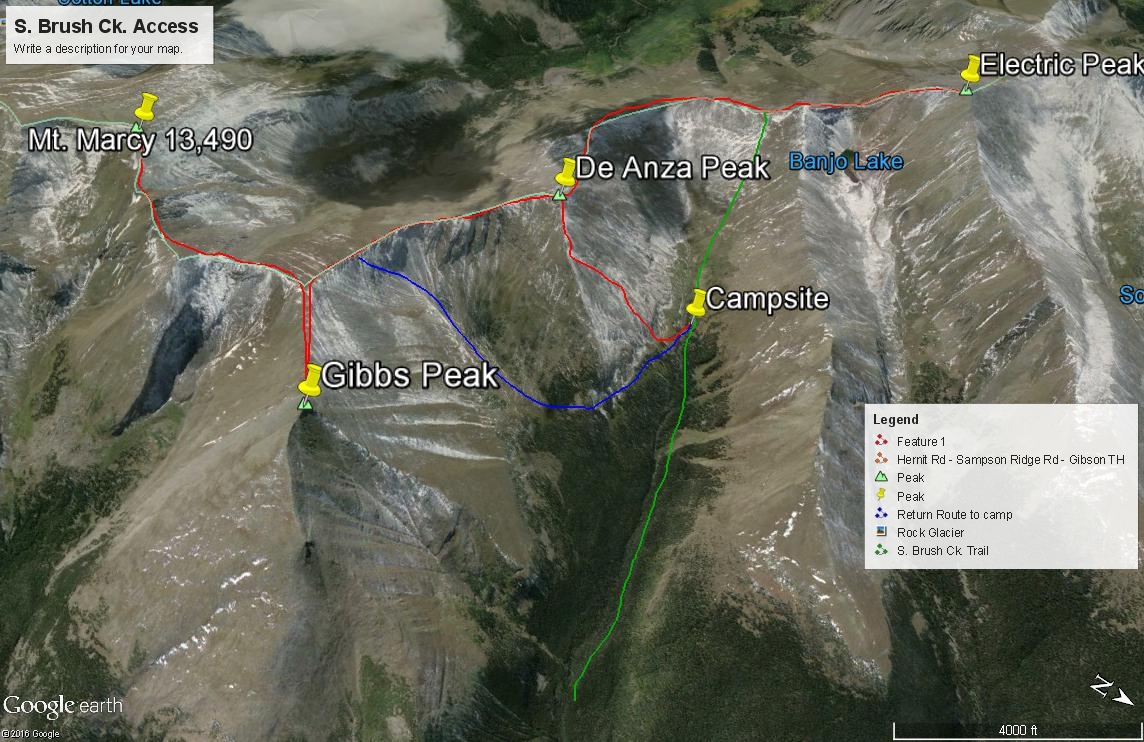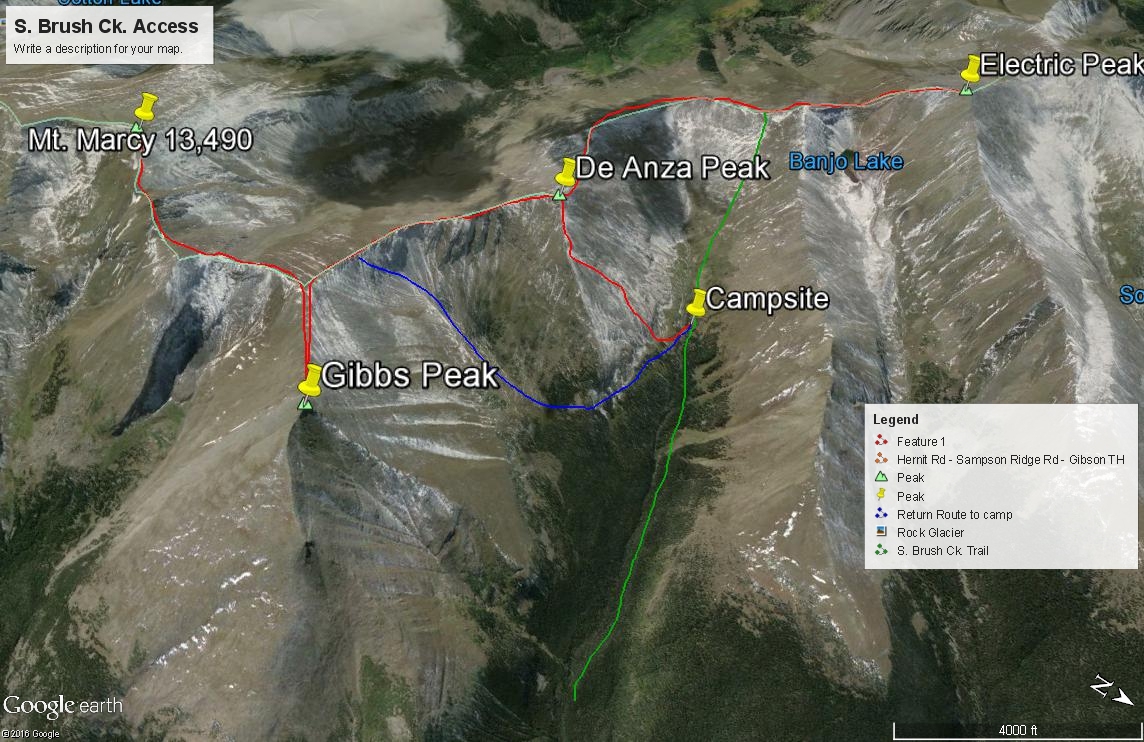LoJ: #202 (Pre-LiDAR #218) / 13,577' Gibbs Peak
Peak Summary
The peak itself is on easy to moderate terrain (Class 1 & 2) typical of the Sangre de Cristo, but it is also located in a remote section of the range that makes access difficult and long because of private property issues. From the east side of the range, the best approach is to hike from the Gibson Creek TH up the Rainbow Trail to South Brush Creek. From the head of that drainage, Electric Peak, De Anza, Gibbs and Mt. Marcy are easily accessed. Hiking up Brush Creek is how we climbed these peaks and the route descriptions are based on this access. You can also come in from the Ducket Creek TH that puts you directly on the Rainbow Trail for a 5 mile hike south to the South Brush Creek Trail. Unless you really like exceptionally long day hikes, it would be best to consider either access as a backpack trip. Another possible access is from the San Luis Valley and the Cotton Creek/Lake TH. (#749) This would significantly reduce the overall hiking mileage, increase drive time from the Front Range or decrease drive time from the Western Slope. This too would be either a very long day or best as a backpack trip. If you wanted to just do Gibbs, Marcy and De Anza, another option would be to head up from the Gibson Creek TH along the Rainbow Trail to trail #1350 which follows along Texas Creek to some small upper lakes. You could climb Marcy first, then hike north to get Gibbs and De Anza, then return by South Brush Creek or back over to Texas Creek and out. Pre-Lidar elevation for Gibbs was 13,553.



